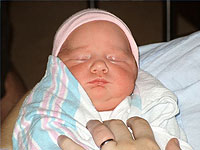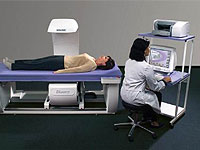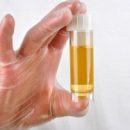Classical transient hypoglycemia of newborns is manifested for 12-48 hours after birth, it is noted in a specific risk group, and is found in two of the three premature babies with a small weight, or born from matery patients with diabetes. In the article about it.
Content
- Clinical classification of transient hypoglycemia
- Diagnostics, treatment and forecast for transient hypoglycemia
 For many years, research has been conducted on the identification of low glucose glucose newborns and the causes of neonatal hypoglycemia.
For many years, research has been conducted on the identification of low glucose glucose newborns and the causes of neonatal hypoglycemia.
Difficulties of this problem arise in connection with various approaches to this pathology. Until the 80s of the last century, the glucose level was permissible to be permissible 1.67 mmol / l in the first 72 hours of baby life and gradual growth to 2.2 mmol / l. For premature children, this figure should not be below 1.1 mmol / l. Currently, the hypoglycemia began to consider the level of sugar below 2.2 mmol / l, and the recommended observation time of the state of babies was extended to 18 months from the birth.
As a result of the studies, WHO experts concluded that only numbers above 2.6 mmol / l can be considered a safe level. When glucose decreases below the treatment of the treatment, it is necessary to start as soon as possible, since such a blood sugar level is associated with irreversible neurological disorders.
The pathogenesis of hypoglycemia in children is still not fully studied, one clearly surely: the reason lies in the lack of glycogen in the liver of the baby, because the fruit does not produce glucose, but lives due to maternal. It is known that glycogen reserves are created in the last weeks of pregnancy, which is why premature children with intrauterine hypotrophy are in a special group of risk.
Clinical classification of transient hypoglycemia
Allocate various hypoglycemia options:
- Early — develops in the first 6-12 hours of life, and the risk group makes children with diabetes materna;
- Classical transit — 12-48 hours of life relate to premature children and twins;
- The secondary hypoglycemia is associated with sepsis, impaired temperature regime, hemorrhage into adrenal glands, disorder of the nervous system, as well as the mother of which were taken drugs reduced sugar;
- The persistent hypoglycemia usually occurs a week after birth in a shortage of hormones, hyperinsulinism, a violation of amino acid synthesis;
Clinical manifestations of such a state are often convulsions of babies, tremor, twitching, hypernithivity syndrome, manifested by a sharp cry and shrill cry. Weakness, tightening, apnea, anorexia, cyanosis, tachycardia, unstable body temperature, arterial hypotension.
To the kids born in the risk group include:
- Children with hypotrophy;
- premature babies with low weight;
- born from matery suffering from diabetes;
- Children who have undergone asphyxia;
- kids with blood transfusion at birth.
Diagnostics, treatment and forecast for transient hypoglycemia
Children relating to such risk groups, the first analysis on the level of glucose is recommended to be carried out 30 minutes after birth and then every 3 hours during the first 24-48 hours, then every 6 hours, and starting with the 5 days of life — twice a day.
The close attention of non-station and pediatrician specialists should be devoted to differential diagnosis with possible sepsis, asphyxia, hemorrhage to brain tissue, as well as with the consequences of mother's medicinal therapy.
Most likely deadlines for the development of hypoglycemia in children — This is the first 24 hours of life of the baby, which may be due to the main disease that appeared by the transient hypoglycemia provocateur. If a child exhibits such severe clinical symptoms of hypoglycemia, as a stop of breathing, convulsions, etc., Urgent glucose level measurement. If the control numbers are lower than 2.6 mmol / l, the urgent intravenous administration of glucose and constant control of sugar levels followed by adjusting with numbers below 2.2 mmol / l and the administration of drugs: glucagon, somatostatin, hydrocortisone, diazoxide, etc. An important rules for the treatment of hypoglycemia of newborns is continuous breastfeeding.
The prognosis of treatment depends on the time of diagnosis and the severity of the state of the kid. If the low level of sugar is not accompanied by clinical manifestations, it usually does not happen irreversible lesions. English neonatologists believe that the frequency of brain lesions from transient hypoglycemia corresponds to the frequency of the occurrence of Dauna disease.









